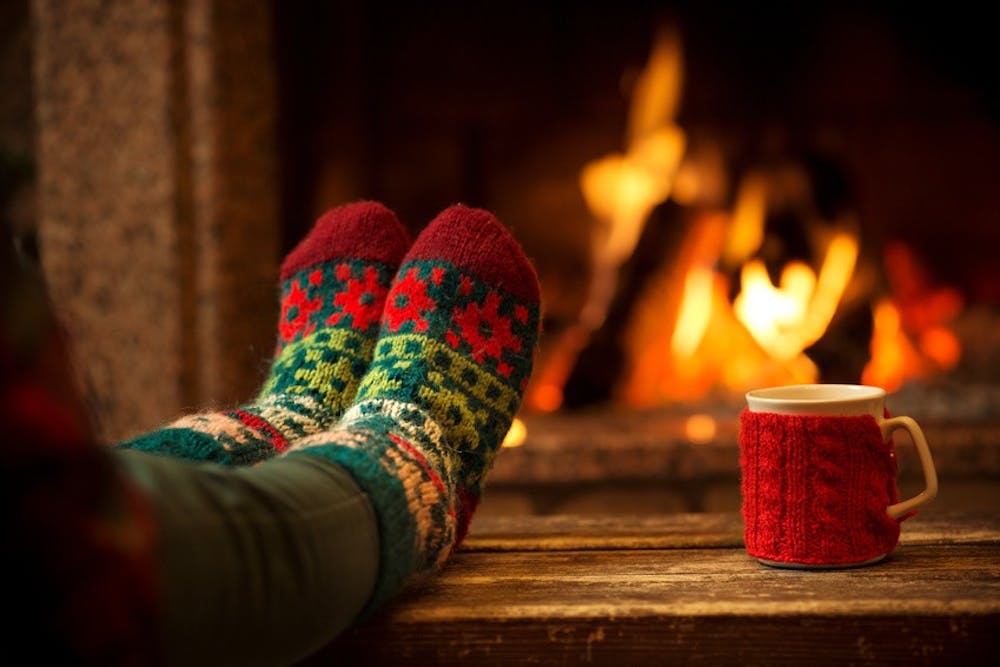by Melissa Aguilar |
Now that Halloween’s over and colder weather is moving in, some overly-excited people have begun blasting Christmas music, while others, bundled in scarves and hats, grumble “winter’s coming.” Whether this is your first Pacific Northwest winter, or you’ve lived here all your life, here are some tips to make the best of the season.
Dashing through the s(no)w
- Warm up your car outside: Getting your vehicle nice and toasty and defrosting the windows should not be done while your car is parked in an enclosed space, like a garage. Even if you have the garage door open, carbon monoxide may still not be able to escape, according to RadioIowa.
- Make sure everything’s running smoothly: That means checking your headlights are working, testing your car’s battery, your tires are properly inflated and making sure your car has enough anti-freeze. Keeping your tank at least half-full will help avoid gas-line freeze up.
- Create an emergency kit: Compile a pack of the essentials to always keep in your car, things like an ice scraper and brush, blankets, flashlights, matches, some snacks and a portable radio.
Wanna be warmin' something
- Let the sun in: By opening the shades on your south-facing windows during the day, the sunlight will naturally heat your home. Close them again at night to reduce chill.
- Know your thermostat: If you’re out of the house or asleep, turn your thermostat back 10 to 15 degrees. By doing this for eight hours every day, you could save up to 10 percent on heating bills, according to the U.S. Department of Energy. They have a podcast that can help you figure out how best to program your equipment.
- Got air leaks?: While it might seem expensive to pay to keep drafts out, it’s an investment that will pay off in the long run. Test to see where the air leaks are coming from by holding up a tissue near the window. If it flutters, that’s where the draft is coming from. Draft snakes are a great idea, or if you are able, get window caulking or install weatherstripping.
- Add moisture: Moist air holds heat better and actually feels warmer than the dry air that’s often found inside. To amend this issue, a humidifier might be in order. For a more aesthetic approach, an array of houseplants could help maintain moisture as well.
- Use that ceiling fan: Using a fan during the winter seems counterintuitive, but setting it to run clockwise helps push hot air back down. When the weather gets toasty again, set it back to counter-clockwise to push the hot air up again.
Bundling up
- Layer it up: Always opt for a bunch of thinner layers rather than one bulky, huge layer. If you start warming up, you can simply take off one layer, plus you’ll look pretty stylish.
- Avoid cotton: When cotton gets wet, it tends to soak up the water and not dry out for a while. If you’re planning on being outside on a rainy day, Portland Parks and Recreation recommends synthetic fabrics or wool for your outer layers. They will keep you warm even if they get wet and will dry a lot faster than cotton.
- Invest in a good raincoat: Using an umbrella is like using a selfie stick around these parts. If you’re going to make it through at least four winters here, keeping dry without looking like a lost tourist is essential. While shopping, keep in mind that water-resistant clothing will not entirely repel water, but rather, delay it. They should be fine for light showers or highly aerobic activities. If you’re more active or are in more extreme weather conditions, REI recommends waterproof garments.
- Get galoshes: Nothing will make you feel more cold and miserable than having wet feet. With a good pair of rain boots, you can splash through the puddles rather than running to dodge them all. Make sure you also have a good pair of socks on-- too tight and they’ll restrict blood flow, too thin, and they could cause blisters.
Melissa Aguilar is copy editor for The Beacon. She can be reached at aguilarm16@up.edu.








